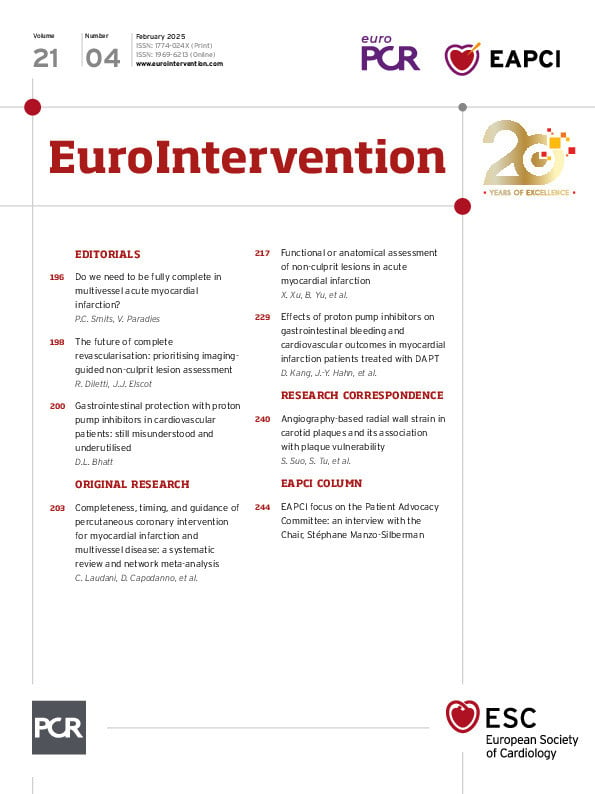What is the role of the Committee?
The EAPCI Patient Advocacy Committee's main aim is to put patients' interests at the heart of the care provided by interventional cardiology teams. We want to strengthen patient participation by not only ensuring they understand the diagnostic and therapeutic strategies proposed, but by also improving the quality of information they receive. We aim to improve our understanding of the patient’s needs in order to better our diagnostic capabilities, therapeutic solutions and optimise follow-ups. The Committee benefits from the knowledge and experience of interventional cardiology professionals with diverse backgrounds in terms of expertise, seniority, country of origin, including nurses and allied professionals as well as expert patients. The Committee's role is to define the needs in terms of patient information and to improve communication between patients and the cardiology care team. The Committee is also devoted to supporting the dissemination of information to patients to improve their experience of interventional procedures, to promote specific actions in understudied and/or underrepresented populations and to work closely with the ESC Patient Forum.
How does the Committee benefit both the interventional cardiologist and the patient?
The previous committee developed patient information videos explaining various interventional procedures (coronary angiogram, PCI, TAVI, TEER and LAAO) in several languages which we will continue to promote to the community and evaluate how to extend and translate into other languages. The Committee also aims to increase cardiologists’ awareness of patient experience, perception and feedback. A patient-reported experience measurement (PREM) questionnaire has been drafted and is now available in ten different languages. The European Patient Experience in the Catheterization Laboratory (PATCATH) questionnaire helps us to understand and improve patients’ experiences while undergoing catheterisation laboratory-based procedures. These tools may improve the quality of the communication between patient and professionals, facilitate exchanges and optimise mutual understanding.
What are the key projects you are working on during your term?
The key projects were defined by the Committee Co-Chair, Joanna Wykrzykowska, in conjunction with EAPCI Advocacy and Regulatory Affairs Pillar Chair, Marie-Claude Morice. We have planned a patient feedback survey that will help to explore communication and comprehension of their disease and symptoms. This survey will provide original insight into how we can improve patient symptom evaluation and our communication. Specifically, regarding women, we are discussing how EAPCI can optimise its participation in trials, improve awareness of and access to cardiovascular procedures and ensure optimised follow-up programmes. Future work will involve liaising with our colleagues in EAPCI. Finally, the last, but not least, topic is a survey for patients with structural diseases to better understand their reporting and definition of symptoms, to evaluate the possible sex differences in their description and/or recognition of symptoms and diagnosis. This information could then enable the development of an aortic stenosis-specific quality of life questionnaire (as a template for other valvular diseases).
How can EAPCI members become involved in the work of the Committee?
To realise this ambitious program, all Committee members are of course very actively involved, and above all we want to establish a close collaboration with other Committees, such as the EAPCI Nurses & Allied Professionals Committee, the EAPCI Gender and Disparities Committee, the EAPCI Young Committee, and the EAPCI Valvular and Structural Heart Interventions Committee, among others, in order to achieve the most integrative synergy of skills and viewpoints possible.

